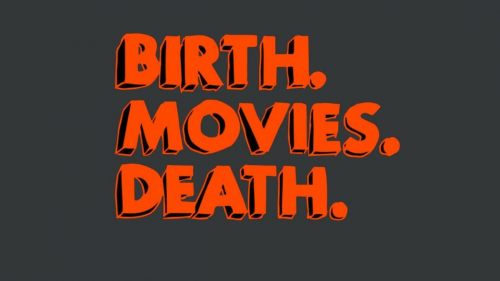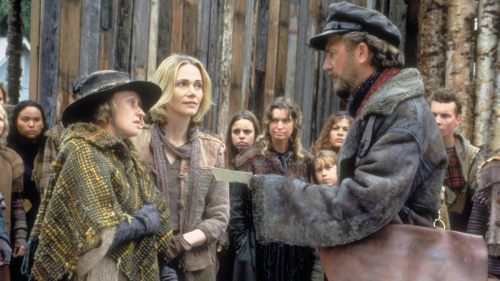Cruising: The Cars of AMERICAN GRAFFITI
George Lucas’ 1973 American Graffiti is a terrific film about that transition from adolescence to adulthood and what it means to define and redefine oneself. It is a film about romantic love, about fearing what it means while simultaneously longing desperately for it. It is a film about nostalgia, as much its pitfalls as its soaring heights.
It is a film about cars.
The automobile might be, if not the most important invention of the 20th century, certainly the most affecting. Nothing has changed the way we live our daily lives on such a grand scale as the car, with the possible exception of the mobile phone.
Today, car culture is defined by European manufacturers. The technology of Mercedes, the aesthetics of Ferrari and Land Rover, and the engineering of Porsche are what set the pace for the future of the automobile. But there was a time when the greatest cars in the world were manufactured in America. And while that time may have come to a close in 1961, when Jaguar unveiled the iconic E-Type, the ripples of America’s car culture would continue to be felt for years.
Seen purely through a gearhead’s perspective, American Graffiti is interesting because it is a movie that is nostalgic for a period in America’s car culture that is itself inherently nostalgic for a different time. By 1973 America’s years of directing the course of the automobile industry had come to a close. There were still some truly great cars, and there was a burgeoning resurgence of the great American muscle car, but the days of the rest of the world trying to keep up with Detroit were over.
A decade before that, the end of America’s car culture was beginning to be felt. But on one night in 1962 the American car still represented freedom, even if it was just the freedom to drive around in circles.
The Toad and the Impala
No character in the movie embodies this desire to just go as much as Terry “The Toad” Fields (played by Charles Martin Smith). The Toad’s got a good heart, but he’s kind of nebbish and kind of a dweeb. He rides around in his (properly cool) Vespa Scooter, but it’s not until Ron Howard’s (total jackass) Steve Bolander hands over the keys to his ’58 Impala that his night turns around.
The Toad reinvents himself behind the wheel of that car, charming Debbie Dunham (Candy Clark) into cruising with him for the evening. The Toad enacts all of the teenage boy’s fantasies in one night: he gets a cool car, scores some booze, gets in a fight, and goes home with the girl. The Impala turns the Toad into a self-styled Tiger.
He’s still kind of a dweeb, though.
The Chevy Impala is a hell of a machine, one whose legacy is still felt today. The Impala first appeared as a concept car in 1956 and had more in common with the sleek Corvette than the thunderingly huge cruiser it would become. The first true Impala was introduced in 1958, and that model is still the best car to ever wear that badge.
The Impala marked a huge change for Chevrolet, with a completely different structure than any of the manufacturer’s other cars. It was a car meant to evoke luxury and wealth, the very definition of “go big or go home.” Everything about the car was meant to pop. The dual-headlights would be unmistakable from miles away, even in the dead of night. It was long and low and wide, less a car and more a speedboat with wheels. And everything about the body, from the interminable bonnet to the sloping roof to the subdued tailfins and sculpted fenders, was meant to draw the eye.
The Impala was the first of Chevy’s cars to wear the crossed-flags badge, and the first in their line to offer a convertible (Toad drives around in the superior hardtop because for all his faults, Steve has good taste). It wasn’t just a car, it was a fantastic promise.
John Milner’s ’32 Deuce Coupé
Paul Le Mat plays John Milner, the saddest character in the film. John’s all flash and all show, a legend on the streets of Modesto, but he’s a broken-eyed man who knows he can’t live up to his own image even though he can’t stop himself from barreling forward.
Young Carol Morris (Mackenzie Phillips just radiating exuberance) brings John back to life and makes him realize that his days as Modesto’s drag-race king are finished, for all the good it does him. John drives a car that defines him as a character, and that is the heart of American Graffiti.
The 1932 Ford Model B was the cheaper version of the Model 18, itself the first mass-marketed car to have a V8 engine. The Model 18 outsold the Model B, and by a country mile, thanks to its engine. It’s about power, and the freedom power affords.
Although the Model B was discontinued just two years after its introduction, it came back to life in the years immediately following World War II. It may never have achieved what it was designed for (a cheaper and theoretically more popular alternative to the Model 18), but the Model B was arguably the catalyst for the next three decades of America’s car culture. It was cheap, it was readily available and most importantly it was easy to modify. The two-door coupé version in particular was heavily sought after by hot rodders and drag racers like John Milner.
John’s Deuce Coupé epitomizes the entirety of cruising culture. It is one of cinema’s greatest and most readily identifiable cars. Its bright yellow paintjob and exposed engine are iconic, and nearly everything about the car was built and modified to George Lucas’ specifications. The ’32 Deuce Coupé is rough and mean, and built with one purpose in mind: to be better than every other machine on the road.
Even if it is outdated. In the climactic moments of his story, John finally goes head to head with Harrison Ford’s scene-stealing Bob Falfa and his ’55 Chevy. “Paradise Road,” says John, two words growled as he tears off into the distance. And after chasing each other all night, the two race as the sun comes up over the desert.
Bob Falfa’s ’55 Chevy Sport Coupé (the same car used in 1971’s Two Lane Blacktop) is a monster, all power and muscle, and if not for blind luck and a blown tire John and his Deuce Coupé wouldn’t have stood a chance.
The Blonde in the T-Bird
If the ’32 Deuce Coupé is the heart of American Graffiti, Richard Dreyfuss as Curt Henderson is the film’s soul. Curt is lost, confused, spending his last night in Modesto before heading to college unsure if he’s even going. He’s a mess from the moment he steps out of his beat-up old Citroën 2CV, and spends the entire movie on the road, never looking comfortable unless he’s a passenger in a car.
A passenger. Curt is twitchy and nervous when he’s in control, but when decisions aren’t up to him, he’s cool and charismatic. He visibly relaxes at the beginning of the movie, getting in the backseat of his sister Laurie’s (Cindy Williams) ’58 Ford Edsel. The Edsel is interesting, because it’s a car that never took off. Where the ’58 Impala was revolutionary thanks to its eyecatching design and iconic name, the Edsel failed thanks to these same intentions.
It is in the backseat of the Edsel that Curt first sees The Blonde (Suzanne Somers), the mysterious woman he’ll chase throughout the rest of the film, and her ’56 Ford Thunderbird, the best car ever produced.
The T-Bird was conceived as a response to the Chevy Corvette, but it was far more than that. It was beautiful and sporty, but luxurious in a way that sportscars of the time were. In fact, the Thunderbird’s genesis led to the creation of an entirely new category of automobile, the personal luxury car.
And did I mention the machine was beautiful? Because it was beautiful. Sleek and elegant, but radiating power. The Thunderbird looks how driving fast feels, and one can see its design reflected through the years by the likes of the original Porsche 911 and Ferrari 250 GT. It is the ideal, and it’s easy to see why Curt’s ideal woman would drive it.
But of course Curt doesn’t find her. First he has to take a drive with the Pharaohs in their terrifying behemoth, the ’51 Mercury Eight. This was a car that was not built for speed, comfort, luxury or practicality. It was a car designed to intimidate. And when the Pharaohs first meet Curt and drag him into their prowling maroon shark, they find him sitting on the hood of a parked car, watching a display of TVs in a store window. Curt needs to be in (or on) a car. Even when he’s not moving, he needs to be going.
Curt’s adventure (including a memorable prank involving a police car, the Ford Galaxie that was the law enforcement vehicle of choice throughout the ‘50s and ‘60s) finally leads him back to Mel’s Drive-In, and his beat-up old Citroën 2CV.
Of note, the 2CV used in the film is actually the 1967 model, predating Back To The Future’s Delorean by more than a decade to become the first cool automotive time machine.
Curt’s Citroën is the only European car driven by any major character (though there is one scene where Lynne Marie Stewart drives a Volkswagen with a busted headlight), and it has seen better days. The 2CV was an economical car, and that was the entire point. It was designed to move people from one place to another, and to do it as cheaply as possible.
In a movie bursting at the seams with beautiful machines, the Citroën 2CV is the coolest car of them all. The 2CV is the epitome of function defining form. It is compact and light, built to run, built to corner quickly and remain stable. It will run forever with the tiniest amount of effort. It also doesn’t care what you think of it. The 2CV is so sure of itself that it oozes cool. And it’s only when Curt realizes what he wants to do with himself, thanks to some sage advice from Wolfman Jack, that he gets behind the wheel and drives himself. And that leads him finally to the airport, onto a plane and out of Modesto.
This article originally appeared in "Back to School," the September issue of Birth.Movies.Death. You can pick up a physical copy of the magazine at your local Alamo Drafthouse, or you can read it on the web here.
Come see Badass Digest Presents American Graffiti! Click your market below to buy tickets:
Austin - 9/8, 9/11, 9/14, 9/15, 9/19
Don't see it listed in your market? Stay tuned, we're still adding dates.



